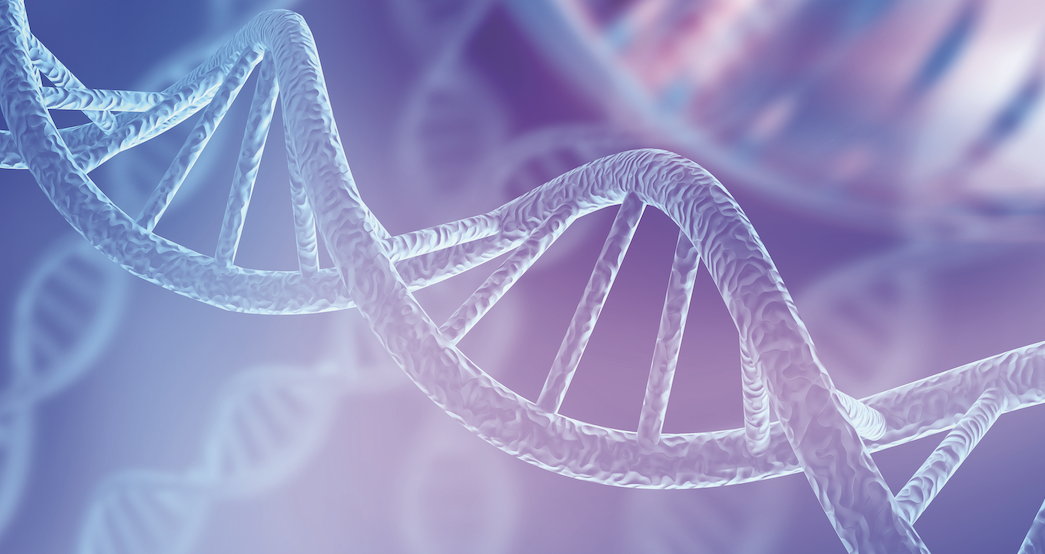How Genetics Affect Nutrition

The human obsession with diets and nutrition can be tracked all the way back to the 1500s: How food affects the body, how to have a healthier physique and how to train for strength and beauty. The goal of having a healthy body has racked the minds of scholars, scientists, royalty and many for centuries.
As it has never been clear what exact diet makes a person lean and healthy, many nutrition plans have been professed to be the best. The one thing that is a constant over time: There is not a single nutrition plan that works for absolutely everyone. Without trying each individual diet or nutrition plan written over the last 500 years, how does someone decide how to feed their body to meet their lifestyle and health goals?
GENETICS!
Each individual has their own set of DNA (deoxyribonucleic acid) that is unique to them. Even identical twins have variations after birth based on somatic mutations of the immune system. So, if we know we are all “one of a kind,” can we use our genotype to determine what and how to eat? The answer is yes!
DNA can be broken down into individual areas known as single nucleotide polymorphisms (SNPs) that scientists can look at to determine how these key genes measure up to a known gene. Samples of saliva, blood or other tissue can be analyzed to find these SNPs, and then they are rated from below average/low, average/normal or above-average/enhanced.
When looking at the results of a DNA test, the answers are not like a report card. No information is good or bad when it comes to how the body utilizes food — it is just information to move forward with feeding the body to meet the goals of the individual.
There are two ways to determine what nutritionally is needed for each person:
- Look at the macronutrient utilization: proteins, carbohydrates and fats. How does the body utilize food? Is more protein better? Is less fat optimal? Are carbohydrates a factor, and if so, what carbohydrates and how much should be consumed?
- Look at the micronutrient’s absorption tendency: vitamins and minerals. Here, we look at how well the body breaks down food into vitamins and minerals and passes them through the cellular wall. Does the body do it efficiently? If not, how can we feed the body for proper absorption with cellular repair and overall tissue health?
Protein Utilization
For this utilization, the FTO and CLT genes and associated SNPs can be analyzed to determine if a low/moderate protein intake is favorable for body fat loss, or if a higher protein intake is more beneficial. A minimum of 10% of nutrition should come from protein in order to maintain cellular reproduction, but some bodies need more. If the body needs more protein, this gives multiple pieces of information. If the genotype suggests you need more protein, it is also saying that the body breaks down protein (muscle tissue) faster when dieting compared to other genotypes. That means increasing protein intake will not only help with body fat reduction, but it will also help preserve the muscle tissue currently established.
Fat Utilization
Genes and associated SNPs such as PPARG, TCF7L2, APOA5, CRY2, MTNR1B and PPM1K can be evaluated to determine if a low-fat diet is necessary to maintain weight loss or if more healthy fats efficiently help in the body fat loss process. If the body does not require a low-fat diet, it means you have a normal level of fat oxidation, or the ability to burn body fat in response to different levels of fat in the body. This also suggests that if you are maintaining a calorie deficient nutrition plan (you burn more calories than you consume), you will have success with weight loss.
Carbohydrate Utilization
Here, we can look at IRS1 and FGF21 to determine if a low, moderate or higher carbohydrate plan is more efficient for body fat reduction. If your body has an enhanced ability to utilize carbohydrates, this does not mean you get to eat all the cookies and bread. But it does demonstrate that the genotypes are favorable to a higher percentage of daily calories coming from complex carbohydrates. If the genotype has a lower carbohydrate plan, greater amounts of protein and healthy fats with plenty of vegetables will provide the body the correct fuel sources to lean out.
Vitamins and mineral absorption tendency is important to keep the body functioning. SNPs like MTHFR, the Vitamin B9 or Folate marker, are broken in many individuals. Folate works in the creation of metabolic reactions, helps with keeping homocysteine levels regulated (a factor with heart disease) and is a transporter for Vitamin B12. Since many vitamins and minerals work together, knowing which ones are absorbed better can provide the information needed to increase certain foods for vitamin and mineral content.
What do you do with this information? If you are striving for weight loss but are struggling with yo-yo dieting and want to stop with the fad plans, find out what your body needs and likes. Find out if high protein or low fat and extra complex carbohydrates make sense for you. Then, work WITH your body to feed it accordingly.
Nutrition does not have to be a struggle. Knowledge is power, and the more you know about your genetic predispositions, the easier it is to feed your body for your goals.
About the Author
Coach Kati Epps is the founder of MyBody GX with a background in chemistry from Colorado State University, an ACE certified personal trainer, health coach and nutrition specialist.






